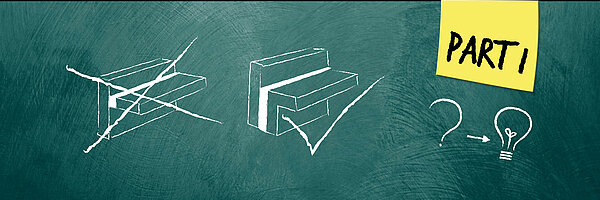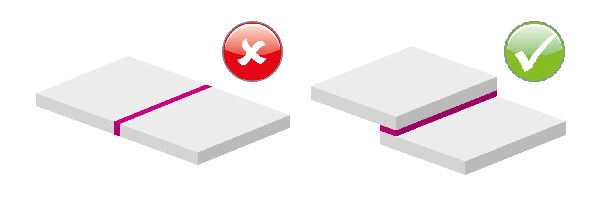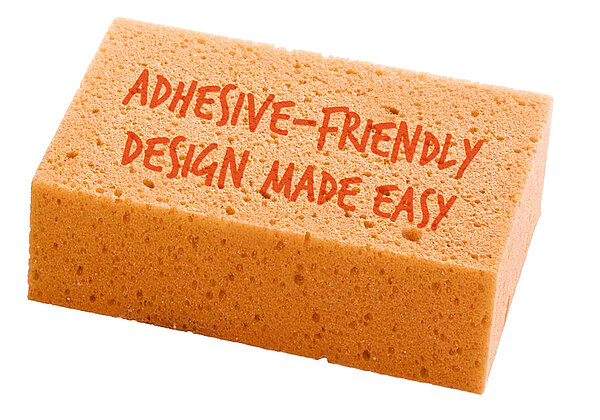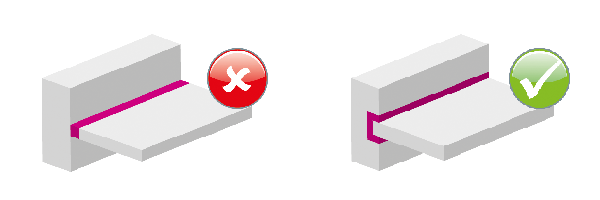As noted previously, when a structure originally constructed to be welded will then be bonded, the design should be modified. Although the adhesive will deliver proper tensile and compression strength values, the occurrence of a slight peel stress will lead to instability in the structure (Figure 3)
To overcome the design challenge in this example, designers can use a larger cylindrical base along with a pre-engineered borehole in the baseplate. This will create a round tongue and groove joint.
The right bond makes all the difference
When choosing between an adhesive or a joint with a screw or weld, the one main difference to remember between these joining techniques is that the forces applied from an adhesive effect the entire bonded laminar area, not just isolated (punctual or linear) areas, as is the case when locking with a screw or a weld.
That's why it is important to note that you cannot interchange screwing and welding with adhesive on the same project. It won't work. It won't produce the strength needed to hold the bond.
Take for instance two metal sheets measuring 1 ft. long by 1 ft. wide that need to be joined. Only a small area of the metal sheets need to be overlapped when welding or screwing them together. Whereas, an area this small is not sufficient for bonding. To achieve a strong bond, the components would need to be designed to overlap a larger area. The larger bonding surface results in a stronger bond with tension spread more evenly throughout the components. (Figure 1)
New materials and designs often require the use of adhesives. Current material trends that foster adhesive bonding are composite materials like carbon fiber reinforced polymers (CFRP), glass fiber reinforced plastic (GFRP) and various multi-material designs. Welding, screwing and riveting are still good joining methods. However, they don't always create a reliable and durable connection. For example, they are dependable for steel-to-steel or aluminum-to-aluminum joining, but less reliable for polymers and multi-metal mixes like steel to aluminum.
A typical mistake, made time and time again, is intending to bond a component, which has already been screwed or welded, without adapting its geometry accordingly. This can cause problems in many areas, including adhesive dispensing, joining of materials and bond strength.
Despite the advancements in bonding technology to increase adhesion success, this science still remains on the back burner of many engineering studies. Typical mistakes made by engineers not familiar with bonding techniques, in the trial and error phase, can be easily avoided with some upfront education.
Enlarging the bonding area depends a great deal on the forces that arise in the actual application. Often, eccentric force transmission is to be expected. As this force does not act on one axis, it rotates to get balanced on the next axis, causing a torque that results in peel stress.
Should this occur, an alternate to an overlap joint, is tongue and groove. Similar to the dovetail design long used in woodworking, tongue and groove joins and locks two components together, making it more difficult for them to bend or come apart. (Figure 2)
Structural bonding has many advantages over conventional joining technologies. It evenly distributes tensions, and balances tolerances of the parts while simultaneously bonding and sealing components. To take full advantage of their potential, adhesives should be considered early on in the design phase. Achieving a perfect component design increases the performance of a bond, accelerates the production process and saves money.
Further design options can be found in Part 2











